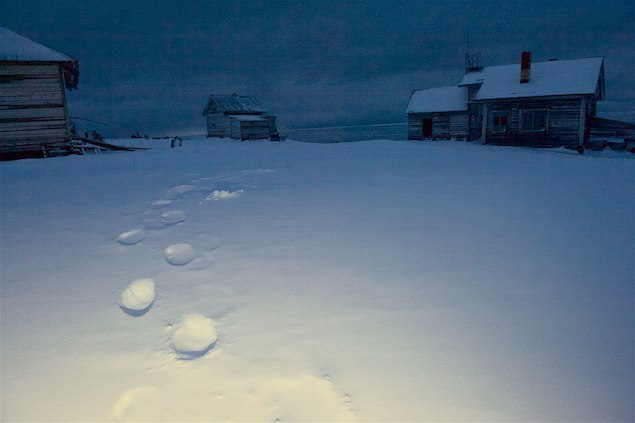Typically about this time of year we begin to turn our attention north to the Arctic and the North Pole. Late February and early March are usually the time of year when skiers are preparing to set out on expeditions to the top of the world, a long and arduous journey that requires a great deal of strength, determination, and focus. But this season I have yet to hear of any expeditions undertaking such an excursion, which leaves me to wonder whether or not we have indeed seen the last of such ventures.
The Antarctic and Arctic expedition seasons use to be staples on the adventure calendar, with a few intrepid explorers setting off in both directions each year. But while the Antarctic has probably seen increased numbers of skiers in recent years, the Arctic has seen its numbers dwindle, and for good reason. Skiing to the South Pole remains a great challenge, although it is manageable for anyone who prepares properly, has the right gear, and doesn't mind spending a month and a half out on the ice.
Going to the North Pole is a completely different beast though, with much bigger challenges to overcome. Since skiers are actually traveling over a frozen ocean, there is a measure of instability involved that often leads to massive rubble fields that can take days to cross. Climate change has also caused the ice to thin, and created wide sections of open water as well. What was once frozen pack ice is now liquid, forcing skiers to go around or swim across instead.
Because of these changes, we haven't seen a successful full distance expedition to the North Pole since 2014, when
Eric Larsen and
Ryan Waters completed that journey. Over the course of the ensuing years, a number of people have tried, but most have had to give up very early in the expedition. Massive storms have become the norm this time of year, bringing fierce winds and frigid temperatures to the Arctic. Worse yet, those conditions have made it difficult for aircraft to operate in this part of the world, which forced
Kenn Borek Air – a company whose motto is "anytime, anywhere" – to stop supporting expeditions to the North Pole.
That isn't to say that there haven't been people who have skied to 90ºN. On the contrary, each year there are "Last Degree" skiers who cover a partial distance to the top of the world. Most of them operate out of the
Barneo Ice Camp, a temporary base created near the 88ºN mark on the Russian side of the ice each season. That base facilities scientific and exploratory missions, as well as adventure travelers, coming and going from the Arctic each year, and it is a point of exit for full distance skiers, but it isn't a launching point for those longer-distance expeditions.
One explorer that I thought we'd be following to the North Pole this season was
Mike Horn. Last year, he skied across Antarctica as part of his
Pole2Pole Expedition, which was to include a journey across the Arctic this year, which would continue down through Greenland before returning to his starting point back in Monaco. But, I haven't seen any indication that Mike is headed to the Arctic to attempt this crossing and the latest updates on his website were posted back in October when he was sailing the Great Barrier Reef off the coast of Australia. There have been
some vague mentions of him having already competed this stage of the Pole2Pole, but I am unaware of this actually happening.
So all of this begs the question: wither the North Pole explorers? Have they all abandoned attempt on the Arctic with climate change making things extremely difficult? Is there someone making the attempt this year that I haven't been able to uncover? Is the age of Arctic exploration on foot truly over?
At this point, only time will tell. I can say however, that I am aware of at least two expeditions scheduled for next year, which is a long way off and provides plenty of time for cancellations, delays, and so on. Hopefully that won't be the case, but until these expeditions are truly underway, I remain a bit skeptical.
Do you know of an expedition to the North Pole that I should be following this year? If so, send the details my way please.















